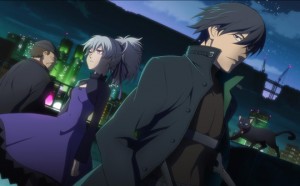What’s the difference between sci-fi and fantasy?
It seems like an obvious question. Sci-fi is about technology, it happens in the future. Fantasy is about magic, it happens in the past.
But what is different about technology and magic? “Sufficiently advanced technology is indistinguishable from magic,” said Arthur C. Clarke. In both genres they stretch the boundaries of what is humanly possible. Many Fantasy staples have simple sci-fi expy’s, and visa-versa. Swords become light sabers. Fireballs become laser guns. Flying carpets become hovercraft and dragons become death-stars. The difference is that the wondrous abilities of magic are explicitly unexplainable (or at least, unexplained) while sci-fi technology is presumed explainable – the better authors just often space us the gruesome details.
Perhaps the difference lies in how the two genres use their key elements. Fantasy uses magic to invoke wonder – to nostalgize over a lost, simpler past, to invoke a yearning for the ignorance of medieval kingdoms, to re-ignite in us the childhood wonder of appreciating something we don’t understand. It uses magic to make the world seem bigger than it is. Sci-fi uses technology to invoke wonder – but this wonder is intended to make us look forward, to excite ourselves for a future where the possibilities are endless, to invoke a desire for the new, to ignite in us an optimism for the future – or, as is the case with many sci-fi stories, to make us worry for the future, to make us doubt the value of “progress,” to complicate things and magnify the problems presented by the very technology they present. it uses technology to make the world seem smaller than it is.
Maybe it comes down to a difference in how we value time. A friend of my pointed out to me that in Fantasy, the oldest and most ancient things are the most powerful – millennial dragons, centenarian wizards and lost magics. It correlates power with experience, with age, with wisdom. The new is untested, inexperienced and likely to fail. In sci-fi, the newest and most advanced things are the most powerful – killer apps, faster guns, newer thrusters. It correlates power with newness, with ingenuity, with youth. Old things are dangerous for the obsolescence and their irrelevance. Some sci-fi stories rather tactfully include human emotion in the category of obsolete things to make a point of the danger of progress.
Or maybe it’s a difference of ethos? Fantasy tends to paint the world in good and evil, while sci-fi tends to paint is as in differing shades of morality?
These are all generalizations, of course, but still, the question is an intriguing one.

